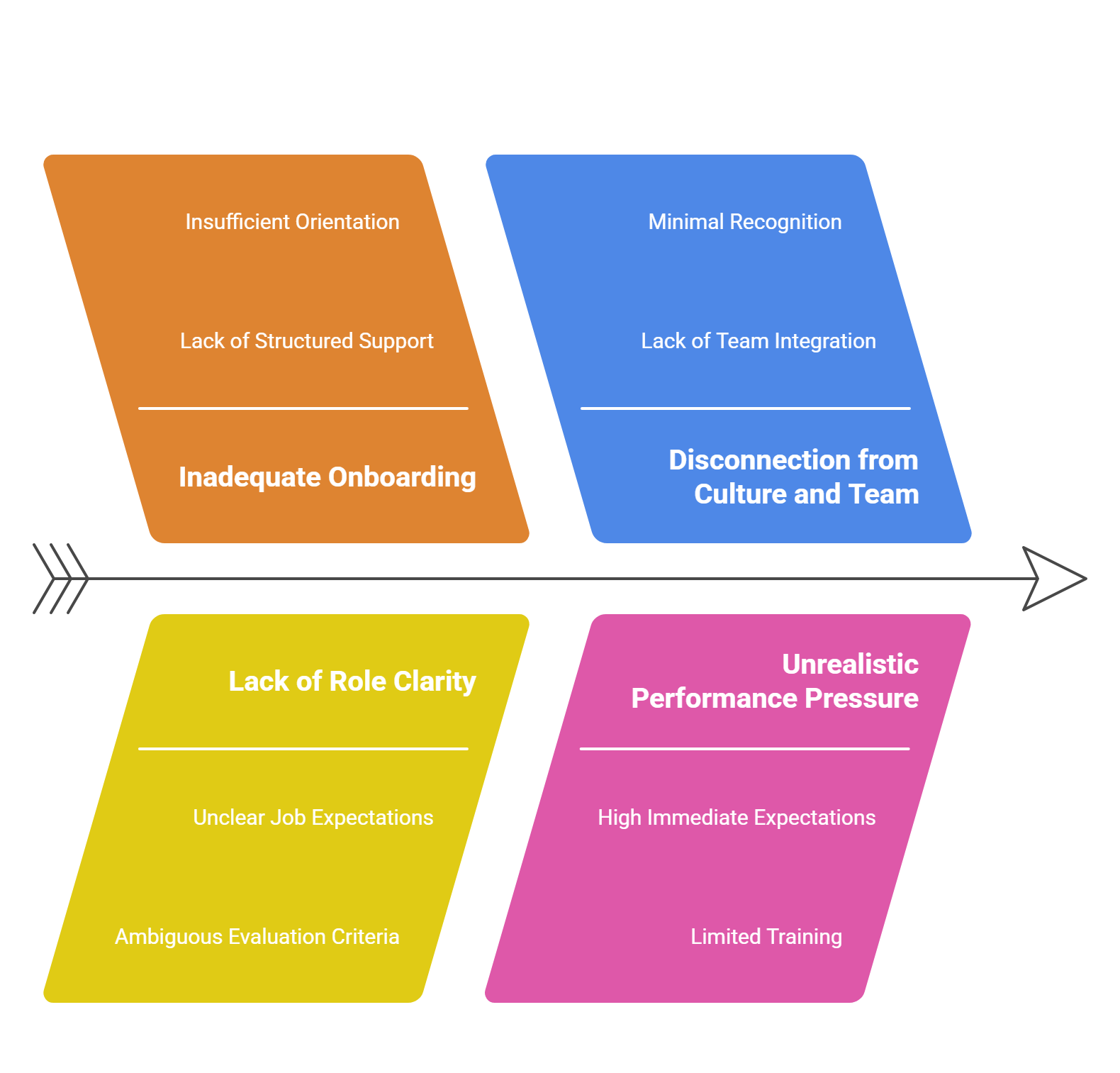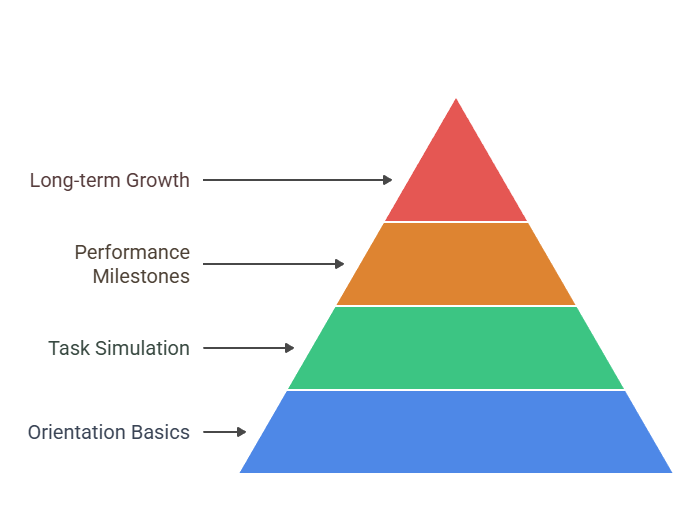Frontline employees play a vital role in how organizations operate and engage with customers. Whether managing service queues, handling deliveries, or supporting sales on the floor, they’re often the first point of contact—and a key driver of business outcomes.
Many companies continue to navigate high early attrition in these roles, with a notable number of employees leaving within the first 30 to 90 days. While external factors like labor availability and compensation trends contribute, internal factors such as onboarding experience, team connection, and clarity of role expectations also influence retention.
One area gaining attention is early-stage learning—how new hires are supported in building confidence, skills, and connection in their first few weeks on the job.
Understanding Early Frontline Attrition: More Than a Resignation
Attrition, particularly in frontline roles, is often voluntary—and fast. According to industry benchmarks, nearly 38% of frontline employees exit within the first 90 days. This kind of churn doesn’t just strain recruitment teams. It disrupts operations, slows productivity, drains morale, and erodes culture.
Unlike layoffs or long-term retirements, early attrition is typically driven by disappointment and disconnection. A new hire might enter a role hopeful and eager, only to find unclear expectations, poor communication, and minimal support. By the time the organization realizes someone’s struggling, they’re already gone.
As we discussed in our article on 6 Ways to Improve Frontline Productivity, Attrition, and Engagement, the roots of attrition often go deeper than compensation—they stem from how supported and valued employees feel in the flow of work.
Why Frontline Employees Walk Away So Quickly

A Disconnected Start
Many employees begin their frontline journey with little more than a rushed orientation. They're handed a badge, shown a training video, and expected to “learn by doing.” This leaves them unprepared and overwhelmed in real work situations. Imagine a service associate asked to handle angry customers on day two—without any conflict resolution practice. When the gap between job expectations and real preparedness is this wide, anxiety and frustration quickly take over.
Misalignment of Role and Reality
Job descriptions often paint an overly simplified picture. In reality, the frontline experience includes pressure, multitasking, and constant human interaction. When reality doesn't match what was promised—or when systems and workflows are too complex without training—employees check out mentally before they exit physically.
Lack of Recognition and Belonging
Frontline employees frequently feel invisible. Unlike office-based roles, where collaboration and visibility are higher, frontline work can be isolating. New hires often go days without feedback or acknowledgment. When their efforts aren’t seen or celebrated, they question their value.
No Clear Path Forward
Many leave not because they dislike the role, but because they can’t see a future. They don’t know how to grow within the company or whether anyone cares about their development. Without a roadmap, frontline work can feel like a dead end.
Inadequate Manager Support
Managers are often promoted from within for performance—not people skills. They’re expected to lead, coach, and retain talent without any formal training on how to do so. When frontline managers aren’t equipped to support or develop new hires, attrition rises by default, not design.
The Impact of High Early Attrition
Financial Cost and Waste
High early attrition leads to a significant increase in hiring and training costs. Each new employee who leaves early takes with them the time, budget, and effort spent sourcing, onboarding, and equipping them. For large frontline teams, this compounds rapidly and becomes a constant drag on HR and L&D resources.
Operational Instability
Team dynamics are constantly disrupted when employees come and go. It becomes harder to plan shifts, deliver consistent customer service, or scale performance. When turnover is high, the organization remains in a state of constant reset.
Declining Morale and Burnout
Attrition doesn’t just affect the people who leave—it affects those who stay. Constantly having to train new hires, absorb extra work, or build new working relationships wears teams down. It increases stress, decreases motivation, and contributes to further turnover.
Brand and Customer Impact
For customer-facing roles, attrition damages brand reputation. Inconsistent service, slow delivery, or poor handling of customer interactions can result from inexperienced or disengaged staff. These moments directly affect how customers perceive your company.
What Are Early Learning Interventions?
Early learning interventions are structured, role-relevant learning experiences delivered across the first 30 to 90 days of employment. Rather than relying on one-time onboarding sessions, these interventions are designed as a continuous learning journey. They focus on building competence, confidence, and connection in the moments that matter most.
They typically include a mix of microlearning (3–5 minute interactive lessons), behavioral simulations, spaced reinforcement (delivered across multiple days or weeks), and built-in feedback loops with managers. They’re often gamified and accessible via mobile devices—ensuring that learning is both engaging and convenient, especially for distributed or shift-based employees. You can see how a global pharma company used early learning and frontline gamification to accelerate onboarding and performance in one of our recent case studies.
The goal is not just to “teach” the job but to support new hires in performing it effectively, while also building a sense of belonging and long-term potential. In this blog, we’ve detailed 7 Ways To Accelerate New Hire Onboarding And Reduce Ramp-Up Time With Microlearning. Microlearning significantly reduce the time it takes for new hires to reach full productivity—while also increasing engagement and confidence during those critical early weeks.
How Early Learning Interventions Help Reduce Attrition
They Build Confidence from Day One
When employees know what to do and how to do it—because they've practiced it—they feel less anxious and more competent. This reduces early frustration and increases the odds of staying long enough to succeed.
They Foster Real-Time Recognition and Progress
Small wins matter. Whether it's mastering a task or completing a module, early learning programs can offer digital badges, shoutouts, or peer acknowledgment that build momentum. Employees feel seen and appreciated.
They Accelerate Integration into the Team
Peer-based learning, shared challenges, or buddy systems promote early social bonding. This creates a sense of belonging and accountability—critical in shift-based or high-turnover teams.
They Show a Clear Path Forward
Effective early learning isn’t just about current tasks—it connects today’s learning to tomorrow’s opportunities. It can introduce growth pathways within the first month, reinforcing that this job has long-term potential.
They Enable Managers to Coach, Not Just React
With visibility into who’s engaging with learning—and who isn’t—managers can act early. Instead of waiting for signs of disengagement, they get alerts that help them intervene, coach, and retain more proactively.
What an Effective Early Learning Journey Can Look Like
An effective early learning path typically unfolds over the first 90 days and evolves with the employee’s experience:

• Week 1 – Orientation, company mission, and role-specific basics delivered through mobile microlearning.
• Week 2–4 – Simulations, quizzes, and spaced learning to practice key workflows and customer scenarios.
• Week 5–8 – Performance milestones, peer challenges, and manager recognition to embed habits.
• Week 9–12 – Introduce career paths, long-term learning plans, and next-level skill development.
This progression keeps employees supported, growing, and motivated at every phase.
Early attrition isn’t inevitable—it’s preventable. If you wait until someone is disengaged to act, you’ve already lost them. By investing in structured, meaningful early learning, organizations create stronger employee experiences, reduce costly churn, and build more capable frontline teams.
Early learning is more than onboarding. It’s your first and most powerful retention strategy. To go a step further, if your organization is planning to roll out microlearning at scale, check out our blog on 10 Best Practices to Accelerate Microlearning Adoption by 2025. It covers actionable ways to embed learning into frontline workflows and ensure long-term adoption.
Master-O®, a frontline sales readiness and gamification platform, has powered several sales enablement & frontline readiness programs for enterprise customers and been a key driver of sales strategies for leaders across industries. To make capability development, sales enablement & engagement more personalized, Master-O® empowers sales managers tap into various data points and analytics for coaching & upskilling their frontline reps. This gives sales leaders and managers much-required objective perspective to reimagine their sales coaching, capability development & enablement approach and realign it with performance metrics.
At Master-O®, our mission statement is to “Elevate Customer Interactions”. We believe frontline executives in enterprises can generate more revenue and provide a differentiated customer experience if they are made more effective. To achieve that, companies rely on Master-O’s frontline readiness platform to continuously upskill, effectively enable, and engage reps to enhance revenue generation.
To learn more about Master-O®, please visit masteroapp.com or schedule a demo to discover how Master-O® can redefine sales readiness & frontline capability development for your organization.
